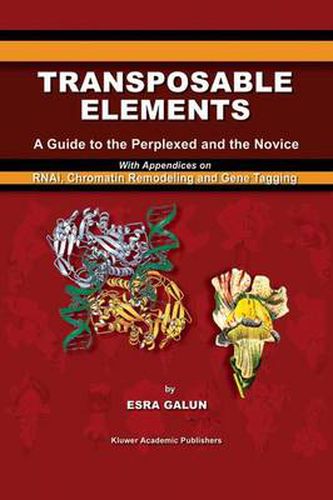Readings Newsletter
Become a Readings Member to make your shopping experience even easier.
Sign in or sign up for free!
You’re not far away from qualifying for FREE standard shipping within Australia
You’ve qualified for FREE standard shipping within Australia
The cart is loading…






This title is printed to order. This book may have been self-published. If so, we cannot guarantee the quality of the content. In the main most books will have gone through the editing process however some may not. We therefore suggest that you be aware of this before ordering this book. If in doubt check either the author or publisher’s details as we are unable to accept any returns unless they are faulty. Please contact us if you have any questions.
Studies during the first half of the 20th century indicated that genes are entities that are located on fixed sites along the chromosomes. Then, due to the research of Barbara McClintock, mobile genetic elements were revealed in maize. While this discovery was initially regarded as a peculiarity, further studies revealed a completely different picture. It has become clear that transposable elements (or elements that had the capability to be mobile in the past) exist in all organisms. These elements can change location and severely affect genes. In many organisms they even constitute the majority of the genetic material. There are two major classes of transposable elements. Class I elements that are mobilized with an RNA intermediate (retrotransposons), and class II elements that lack such an intermediate. This book provides a historical background and fully describes all known transposable elements, the modes of their transposition and the utilization of these elements in medicine, genetics, and crop improvement. It is targeted at a wide-range of readers and can be comprehended also by the novice in this field.
$9.00 standard shipping within Australia
FREE standard shipping within Australia for orders over $100.00
Express & International shipping calculated at checkout
This title is printed to order. This book may have been self-published. If so, we cannot guarantee the quality of the content. In the main most books will have gone through the editing process however some may not. We therefore suggest that you be aware of this before ordering this book. If in doubt check either the author or publisher’s details as we are unable to accept any returns unless they are faulty. Please contact us if you have any questions.
Studies during the first half of the 20th century indicated that genes are entities that are located on fixed sites along the chromosomes. Then, due to the research of Barbara McClintock, mobile genetic elements were revealed in maize. While this discovery was initially regarded as a peculiarity, further studies revealed a completely different picture. It has become clear that transposable elements (or elements that had the capability to be mobile in the past) exist in all organisms. These elements can change location and severely affect genes. In many organisms they even constitute the majority of the genetic material. There are two major classes of transposable elements. Class I elements that are mobilized with an RNA intermediate (retrotransposons), and class II elements that lack such an intermediate. This book provides a historical background and fully describes all known transposable elements, the modes of their transposition and the utilization of these elements in medicine, genetics, and crop improvement. It is targeted at a wide-range of readers and can be comprehended also by the novice in this field.